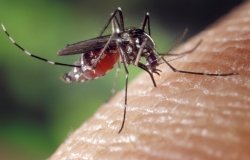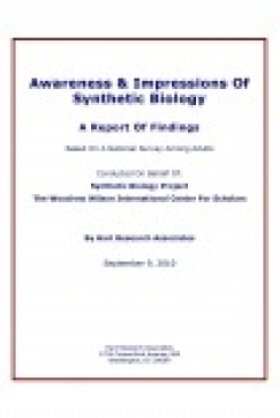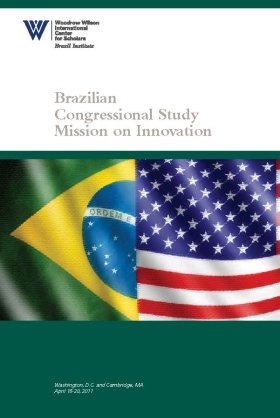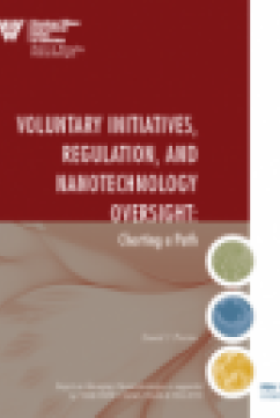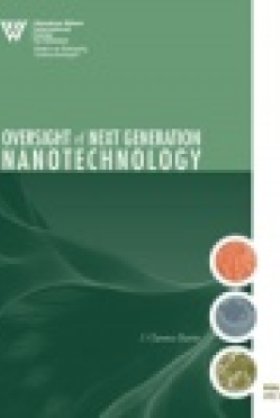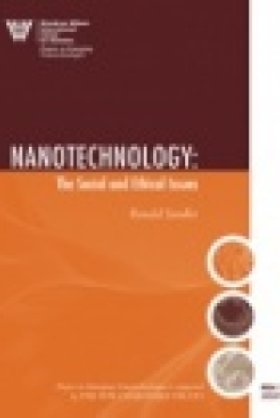Consumers Talk Nano
What are the possible risks and benefits of nanotechnology and consumer products? In an effort to reach out to the American public and engage them in an important online conversation about the issue, the Project on Emerging Nanotechnologies is collaborating with Consumers Union – publishers of Consumer Reports magazine and Consumer Reports Online.
WASHINGTON, DC-—The Wilson Center's Project on Emerging Nanotechnologies, in collaboration with Consumers Union—publishers of Consumer Reports magazine and Consumer Reports Online— announces a major effort to reach out to the American public and engage them in an important online conversation about the possible risks and benefits of nanotechnology and consumer products.
This exciting online event, ConsumersTalkNano, will take place over two days, October 23-24, 2007. Any interested member of the public will be able to communicate online with panelists from the Project, Consumers Union, the International Council on Nanotechnology, Oregon State University, the Meridian Institute and others from 9 a.m. to 5 p.m. each day. To register and participate go to: www.webdialogues.net/pen/consuer. Additional details about nanotechnology, nano-enabled consumer products, and related safety questions are available at www.nanotechproject.org.
"Nanotechnology is not a sci-fi fantasy," according to Carolyn Cairns from Consumers Union. "Many consumers are not aware that nanoscale materials are in some sunscreens, house paints, clothing, and computers being sold in stores around the country." This online dialogue aims to increase people's understanding of a technology that on the one hand promises amazing advances in medicine, alternative energy, and other sectors, but on the other hand, raises the possibility of new health and environmental hazards. Individuals participating in ConsumersTalkNano will have an opportunity to discuss with legal, scientific, and consumer product panelists nanotechnology's potential impact on products, and ideas and concerns relating to health and safety, labeling, and government and industry standards."
"Our polling and focus groups show that Americans know little or nothing about nanotechnology but want to know more. Consumer products—-like the Apple iPhone and L'Oreal RevitalLift face cream—-often are the public's first introduction to nanotechnology. Public confidence in this new technology depends on responsible development that includes full assessment and communication of potential risks as well as benefits," said Project on Emerging Nanotechnologies Director David Rejeski.
A program like ConsumersTalkNano is long overdue. Since fiscal year 2001, the U.S. has invested over $8 billion in nanotechnology research. In 2006 alone, over $12 billion was spent worldwide on nanotechnology research and development by governments and industry. But little has been devoted to researching safety and other impacts on consumers. "Outreach efforts like ConsumersTalkNano can help fill the ‘nano knowledge gap,'" said Rejeski.
Last year, nanotechnology was incorporated into more than $50 billion in manufactured goods. An online list of more than 575 company-identified nanotechnology consumer products—-on the market in shopping malls or over the Internet-—is available at www.nanotechproject.org/consumerproducts. The list includes merchandise from such well-known brands as Samsung, Chanel, Black & Decker, Wilson and Eddie Bauer. It can be searched by company, product name, category, or country.
The ConsumersTalkNano website (www.webdialogues.net/pen/consumer) will be updated with videos, podcasts, and links to further information about nanotechnology through October 24. The dialogue is free but participants are asked to register.
About Nanotechnology
Nanotechnology entails the measurement, prediction and construction of materials on the scale of atoms and molecules, which at this tiny scale can take on unique chemical and physical properties. A nanometer is one-billionth of a meter, and nanotechnology typically deals with particles and structures larger than 1 nanometer, but smaller than 100 nanometers. To put this into perspective, the width of a human hair is approximately 80,000 nanometers.
The Project on Emerging Nanotechnologies is an initiative launched by the Woodrow Wilson International Center for Scholars and The Pew Charitable Trusts in 2005. It is dedicated to helping business, government and the public anticipate and manage possible health and environmental implications of nanotechnology.
Consumers Union
Consumers Union (CU) is an expert, independent, nonprofit organization, whose mission is to work for a fair, just, and safe marketplace for all consumers. CU publishes Consumer Reports and www.ConsumerReports.org.
Related Program

Science and Technology Innovation Program
The Science and Technology Innovation Program (STIP) serves as the bridge between technologists, policymakers, industry, and global stakeholders. Read more
